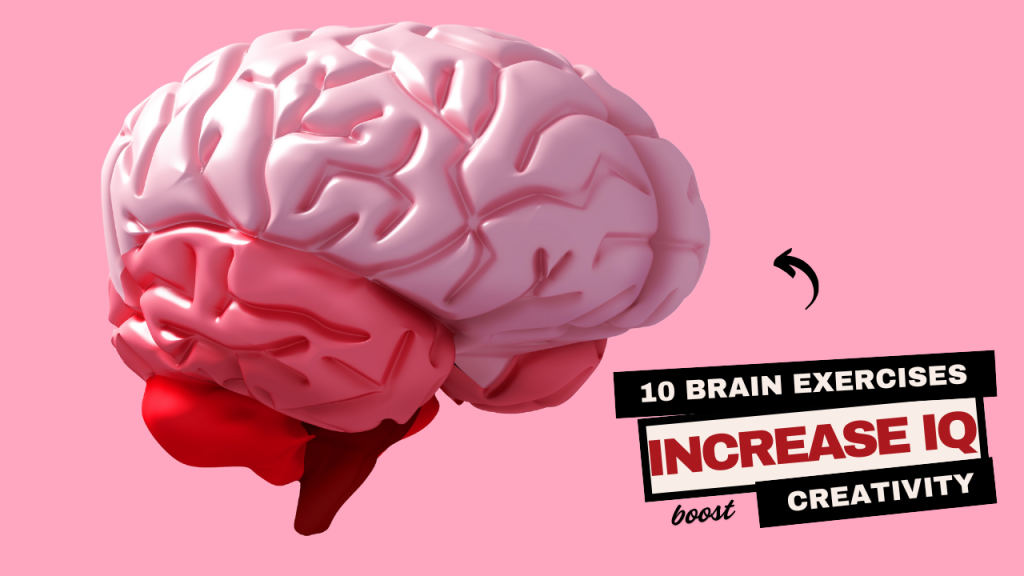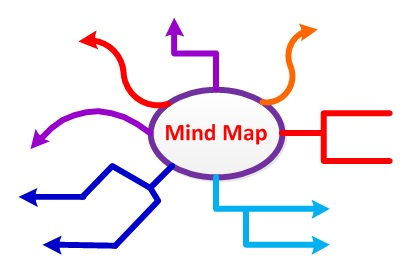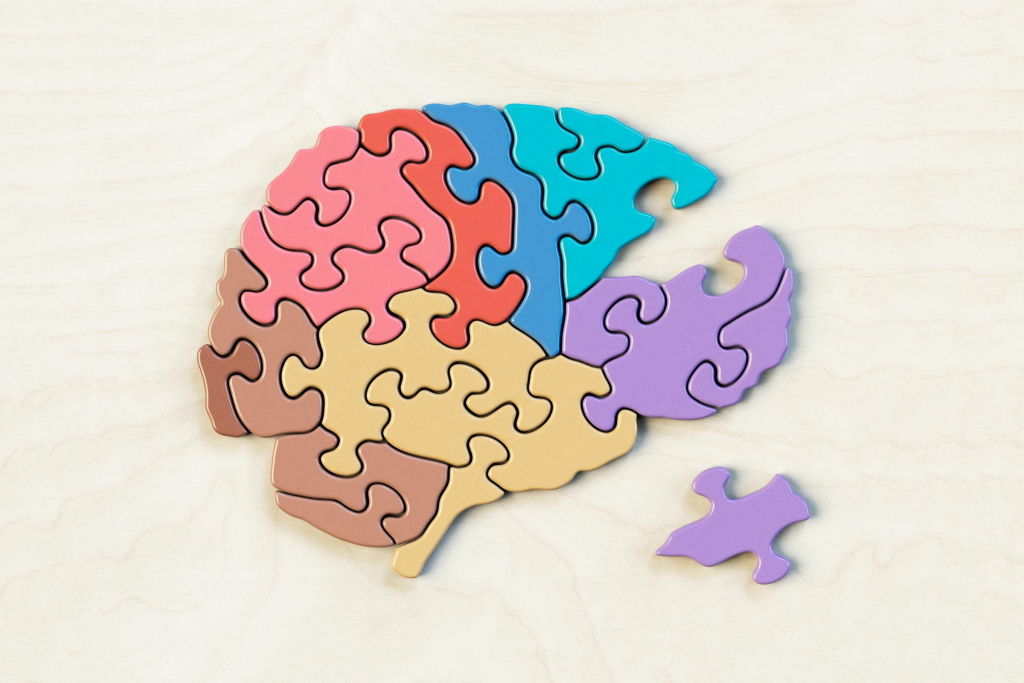What if the key to unlocking your genius wasn’t in your genes, but in your daily habits?
While most people believe intelligence is fixed, neuroscience says otherwise. The brain is like a muscle—the more you challenge it, the stronger it gets. With the right exercises, you can enhance memory, sharpen focus, raise your IQ, and even spark greater creativity—regardless of your age.
Do you know? Studies show that just 15 minutes of brain-stimulating activity per day can significantly increase cognitive performance over time. So, if you’re ready to break free from mental fog and ignite your inner Einstein, here are 10 scientifically backed brain exercises that will boost both your intelligence and creativity.

What Can Happen After 30 Days of These Brain Exercises
| Benefit | What You’ll Notice |
|---|---|
| Improved Memory | Better recall of names, dates, tasks, and information retention |
| Sharper Focus | Easier to concentrate on tasks without frequent distractions |
| Increased Creativity | More original ideas, enhanced problem-solving, and out-of-the-box thinking |
| Faster Mental Processing | Quicker thinking during conversations, decisions, and problem-solving |
| Elevated Mood & Confidence | A greater sense of mental clarity, accomplishment, and emotional balance |
| Stronger Problem-Solving Skills | Ability to approach complex challenges with clearer logic and structured analysis |
| Boost in Productivity | Completing tasks more efficiently due to sharper mental functions |
| Better Sleep Quality | Especially with meditation included, you may experience more restful sleep |
| Heightened Learning Ability | Easier to pick up new skills, languages, or concepts |
| Increased Mental Energy | Less brain fog, more sustained cognitive endurance throughout the day |
1. Mind Mapping

Instead of linear note-taking, try mind mapping—a visual technique that connects ideas around a central topic.
Why it works: It mimics how your brain naturally processes information, encouraging creative thinking and improved memory retention.
Extra Tip: Use color-coded branches and doodles. The more visual, the better the recall.
2. Dual N-Back Training
The dual n-back game isn’t just a memory challenge—it’s one of the few cognitive tasks scientifically shown to increase fluid intelligence.
Why it works: It exercises working memory and attention control, core components of a high IQ.
Did you know? Research published in the Proceedings of the National Academy of Sciences found that regular dual n-back practice led to measurable increases in IQ scores.
3. Learn a New Language

Learning a second language challenges your brain to recognize new sounds, grammar patterns, and vocab—strengthening the hippocampus and neocortex.
Why it works: Bilingual brains show better problem-solving skills and more grey matter in key areas related to intelligence.
Bonus: It opens up new cultural perspectives, enhancing creative thought.
4. Use the “Five Whys” Technique
This simple method—asking “why” five times in a row—helps get to the root of problems and develop deeper insights.
Why it works: It encourages analytical thinking and curiosity—key traits in both high IQ individuals and creative thinkers.
Fun Fact: Toyota famously used this method to train its engineers for innovative problem-solving.
5. Reverse Thinking
Instead of asking “How can I succeed?” ask, “How could I fail?” This exercise turns conventional thinking on its head.
Why it works: Reverse thinking helps break mental patterns and encourages out-of-the-box solutions.
Myth Buster: People often think creativity is spontaneous. In reality, it often stems from structured divergence—like this!
6. Memory Palace Technique
Also known as the method of loci, this ancient Greek technique involves visualizing familiar places to store information.
Why it works: It taps into your brain’s superior spatial memory, turning abstract data into vivid, retrievable images.
Do you know? Sherlock Holmes popularized it in fiction, but memory champions actually use it in real-life competitions.
7. Doodle Your Ideas

Yes, doodling isn’t just a distraction—it’s a brain exercise.
Why it works: It engages both hemispheres of the brain and activates creative thinking while aiding focus and retention.
Quick Tip: Next time you’re brainstorming or stuck on a problem, try drawing instead of writing.
8. Teach What You Learn
If you want to master a concept, teach it to someone else. This forces your brain to organize information clearly and coherently.
Why it works: The “protégé effect” increases understanding and retention. It’s like brain fertilizer!
Try This: After reading an article or watching a video, explain it to a friend or even just to yourself aloud.
9. Puzzle Variety (Crosswords, Sudoku, Logic Games)

Engaging with different types of puzzles flexes multiple cognitive muscles—from verbal fluency to deductive reasoning.
Why it works: Variety prevents mental stagnation and enhances neuroplasticity—the brain’s ability to rewire itself.
Interesting Fact: People who regularly do puzzles have sharper cognition and lower risk of cognitive decline with age.
10. Meditation and Mindfulness

Quieting your mind might seem counterintuitive, but meditation is a powerhouse for brain health.
Why it works: It increases grey matter in areas linked to attention, memory, and emotional regulation—all tied to both IQ and creativity.
Do you know? Long-term meditators show higher scores on creativity tests and faster problem-solving under stress.
Final Thought
The myth that IQ is fixed is outdated. Your brain has incredible adaptive power—you just need to train it like a muscle. Whether you’re aiming to ace exams, solve complex problems at work, or become a more creative thinker, these exercises offer a clear, research-backed roadmap.
Start with just one or two brain exercises a day, and over time, watch how your thinking becomes sharper, your ideas more original, and your mental energy boundless.
Frequently Asked Questions (FAQs)
Can brain exercises really increase IQ?
Yes, certain cognitive training techniques—like dual n-back games, memory palace methods, and analytical thinking tasks—have been shown in studies to improve aspects of intelligence such as memory, reasoning, and problem-solving, all of which contribute to a higher IQ.
How often should I do brain exercises?
For best results, aim to practice brain exercises 15–30 minutes a day, at least 4–5 days a week. Consistency is key. Like physical fitness, cognitive improvement builds over time.
Are these exercises effective for all age groups?
Absolutely. Neuroplasticity—the brain’s ability to adapt—exists throughout life. While younger brains may adapt faster, older adults can still benefit greatly from regular cognitive challenges.
Which exercise is best for creativity?
Exercises like mind mapping, reverse thinking, doodling, and meditation are especially powerful for enhancing creativity by helping you form new associations and break habitual thought patterns.
Do puzzles and games actually make you smarter?
Yes—when used regularly and paired with a variety of brain activities. Games like Sudoku, chess, and logic puzzles stimulate different parts of the brain, improving focus, strategic thinking, and memory.
How soon can I see results from these exercises?
Some people report sharper focus and better memory in just a few weeks, while others may take a couple of months to notice cognitive improvements. Stay patient and consistent.






Awesome
Awesome
Awesome
Good
Very good